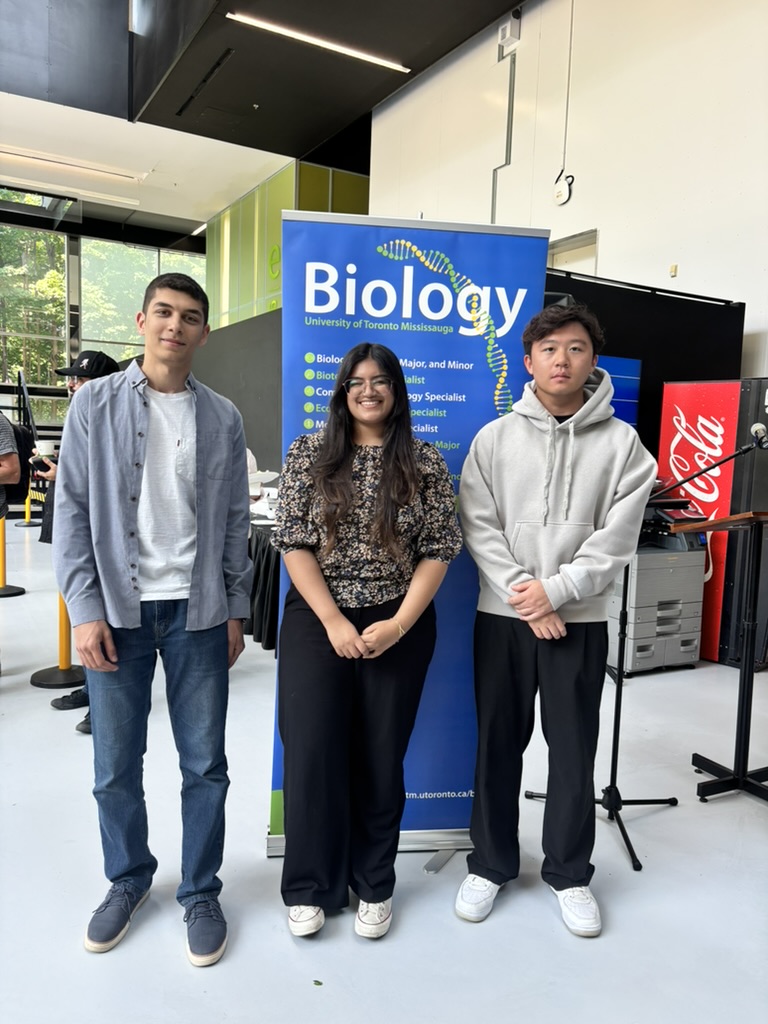Lab News
Flying High at KSR – Preparing the Alta X for new Missions
This week, the Ensminger Lab collaborated with members of the Flight Systems and Control Lab (Dr. Hugh Liu, UTIAS), Longhao Qian, Kevin Ji-Tong Chen, and Enoch Lo, for an exciting Alta X drone test flight at the Koffler Scientific Reserve (KSR). Our goal was to execute a full flight mission while tracking drone logs to record performance data. We also installed a dummy…
Showcasing Our Research in Germany: Anchalya Balasubramaniam at EPPC 2025
We are delighted that Anchalya Balasubramaniam presented her poster at the European Plant Phenomics Conference 2025 in Bonn (September 16–19). Her work, titled “Divergent Photoprotective Strategies in White Pine and White Spruce Under Moderate Drought,” showcases how these two conifers adopt distinct mechanisms to safeguard photosynthesis under water stress. This contribution highlights the innovative research from…
From Climate Drivers to LiDAR: Ensminger Lab ROP Projects at Summer Research Day 2025
The Ensminger Lab was proud to see our ROP students present their research at Summer Research Day 2025. Aimun Malik – Investigating the Climatic Drivers of Tree Growth in White Spruce (Picea glauca) in Canada Tianqi Wang – Comparative Analysis of Xylem Anatomy in White Spruce (Picea glauca) Genotypes Under Drought Stress Adam Raway – The Role…
Celebrating Grace Cheng’s Winning Seminar Series T-Shirt Design
🏆 Congratulations to Grace Vera Cheng, Winner of the 2025–2026 Seminar Series T-Shirt Design Contest at UTM! We are proud to share that our M.Sc. student Grace Vera Cheng has won the 2025–2026 Seminar Series T-Shirt Design Contest! 🎉
Ensminger Lab at CSPB 2025 in Halifax, Nova Scotia 🌲🐋
From August 9–12, members of the Ensminger Lab travelled to Halifax, Nova Scotia, to participate in the Canadian Society for Plant Biologists’ CSPB 2025 Conference. This annual meeting brings together plant scientists from across Canada and beyond to share cutting-edge research, network, and explore the latest advances in plant biology. Nova Scotia’s…
Congratulations to Bridget K. Murphy on Her First First-Author Publication!
We’re excited to share that Bridget K. Murphy, PhD student in the Ensminger Lab, has just published her first first-authored paper in Plant Physiology! Her work, titled “Contrasting effects of warming and drought on autumn phenology of photosynthesis and growth in white spruce,” investigates how climate change-related stresses impact photosynthetic activity and growth timing in white…
Categories
- Awards & Funding
- Climate Change
- Conferences & Meetings
- Experiments
- Lab
- Plant Physiology
- Publications
- Research
- Students/Lab members
- Uncategorized
Archive
- October 2025
- September 2025
- August 2025
- July 2025
- June 2025
- May 2025
- April 2025
- February 2025
- January 2025
- December 2024
- September 2024
- August 2024
- July 2024
- June 2024
- May 2024
- April 2024
- March 2024
- February 2024
- January 2024
- November 2023
- June 2023
- March 2023
- January 2023
- December 2022
- August 2022
- September 2021
- August 2021
- June 2021
- March 2021
- February 2021
- December 2018
- February 2018
- December 2016
- November 2016






